Grape press

After harvesting grapes, a completely logical question arises - how to store it? The best way is to process grapes for juice or other drinks. Let us consider in more detail the features of the structure and purpose of the press for grapes, varieties, principles of operation, and also get acquainted with a master class on the independent manufacture of such a device.

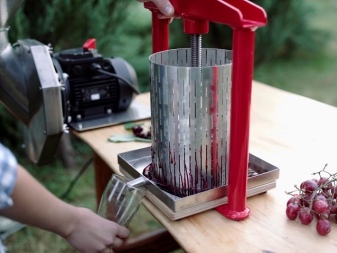
Features and purpose
A grape press is a must for every owner who maintains vineyards of varying sizes. The unit allows you to quickly and efficiently process berries by squeezing the juice. The juice, in turn, depending on the processing method, can be used in pure form or as a raw material for further preparation of wine drinks.
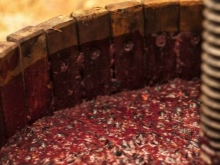

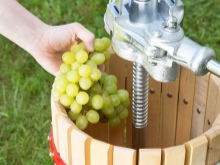
Types of devices
There are several types of units for squeezing juice from grapes, which need to be considered in more detail.
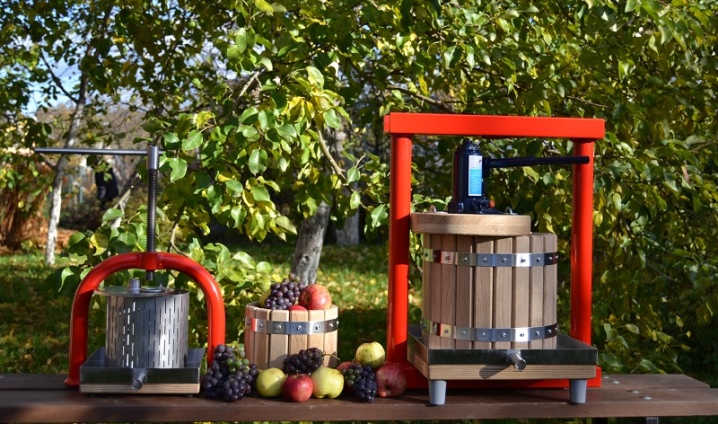
By type of food
The press of absolutely any type of device is equipped with a mechanism through which pressure is exerted on the grapes. There are several variants of the mechanism, differing from each other in the principle of operation - pressure with the help of manual force, operation thanks to electricity and exposure to compressed air masses.
Let's take a closer look at the features of each option.
- Hand-held devices are divided into two types - screw and jack. In the first case, the juice is squeezed out when the screw mechanism rotates, and in the second, the grapes are subjected to pressure when the lever is pressed. The advantage of these structures is that they can be used absolutely in any conditions, regardless of the availability of electricity. But manual presses have one significant drawback - in order to squeeze out the maximum amount of juice, you will have to make a lot of effort.
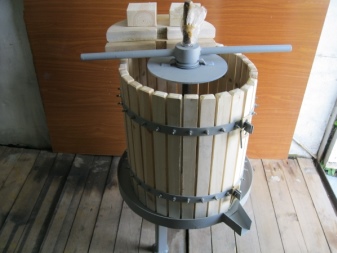
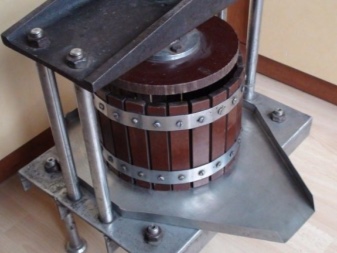
- Electric presses are considered to be more functional and best suited for processing large quantities of grapes in the shortest possible time. A high processing speed combined with a hydraulic or pneumatic system will give a guaranteed result - a high level of productivity. Distinctive features of the two types of electrical systems are the type of pressure - using a water pump or by compressing air masses.

- There are also universal devices that are actively used for processing not only grapes., but also other fruit and berry crops. The operation of such devices is provided by an electric motor, and the principle of operation is subdivided into pneumatic, screw and hydraulic type of mechanism.
It is also worth noting that in the modern world there are many devices designed specifically for the processing of grapes. When creating such mechanisms, all the features of the berries, and in some cases even their varieties, are taken into account.
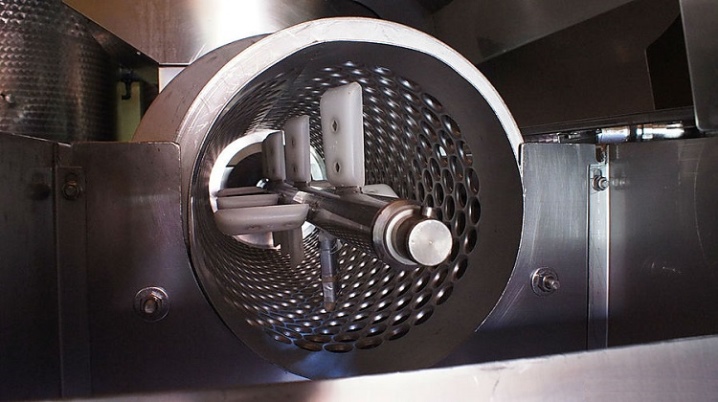
By size and power
The performance of the device largely depends on the volume and dimensions of the press itself, as well as on the power of the mechanism. The unit with the same capacity and different sizes is able to process the same amount of grapes for different time periods. Needless to say, in the case of a large volume of work, the work will be done faster.
Standard handheld devices that are actively used in a household environment can have a volume of up to 25 liters. If you are making a press yourself, you can independently adjust the size of the loading bowl. As for the power, in this case it depends only on your physical capabilities.

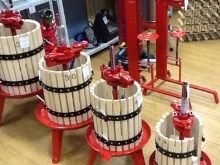
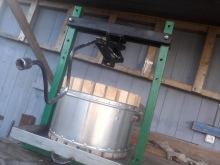
Units with hydraulic or mechanical device types can also be used for professional purposes, for example, in industrial wineries or farms. The volume of such a device is much different, since up to 40 liters of juice can be obtained at the exit from the loaded grapes. The power of such devices is very high, since they are able to process several tons of berries per hour of operation.
Home wineries often do not have the resources to buy such a powerful unit, therefore they use more budgetary devices. Most often these are hand-made presses, but equipped with an electric mechanism for greater productivity.
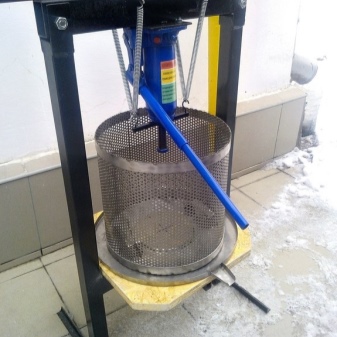
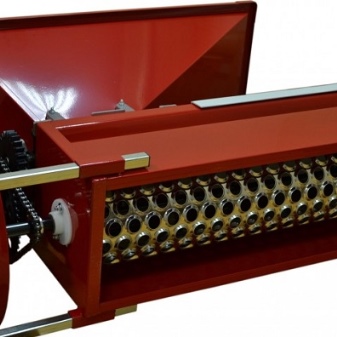
By material
The material from which the press is made also plays an important role and endows it with certain characteristic features. But it should be noted that the materials used must be environmentally friendly and safe for human health when interacting with food. Such characteristics are possessed by wood, as well as some types of metals. It is also necessary to take into account that any material needs proper care, otherwise it will cease to be harmless and will negatively affect the quality of the resulting product.
Most often, in the production of presses for grapes, hard wood is used, for example, beech, oak or linden. All of them are highly durable, resistant to moisture and dry quickly when wet without deforming.
But in order for a device made of wood to serve you for many years, it is necessary to thoroughly dry the interior space, thoroughly clean it from the remnants of raw materials, and also treat it with special agents that prevent the appearance of mold.
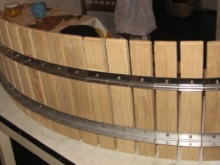
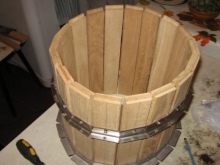
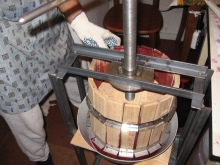
The ideal choice for the press is stainless steel, which is not only resistant to moisture, but also does not lend itself to oxidation. In addition, this material is absolutely non-toxic and does not emit harmful substances, so it can rightfully be called safe.
In the processing of grapes, you can also use aggregates made of cast iron. But, unfortunately, in the absence of a protective layer, the material will quickly deteriorate. Very often, with self-made materials, materials are combined. Elements that must have a high degree of strength are made of steel, and the container for grapes is made of wood material.
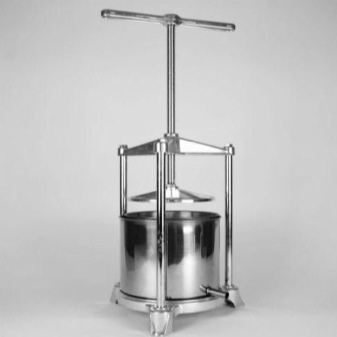
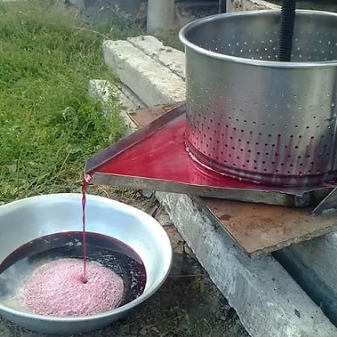
By design
In addition to all the listed classifications, grape presses may also differ in the device of the design itself. Also, the quality and quantity of the product obtained at the output depends on this. Let's take a closer look at the main types of grape press designs.
- The lever design is the most simple and straightforward to operate. The grapes placed in the container are closed with a special circle of wood. Then, using a lever, a load is lowered onto the lid and, with a gradual increase in pressure, juice is squeezed out of the berries. The resulting product flows into the prepared thicket, after which it can be further processed. This design has a significant drawback: in order to process a large number of grapes at a time, you need to make a lot of effort.
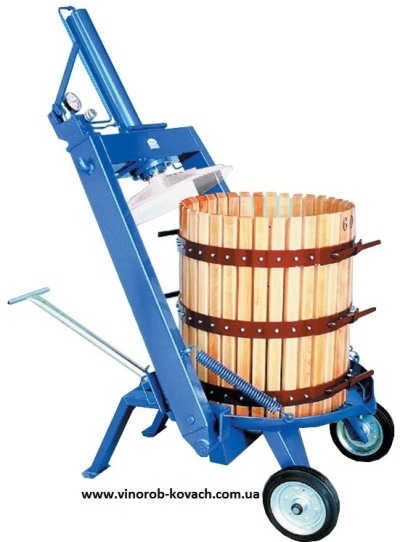
- The jack structure is one of the varieties of the lever press, but is characterized by great ease of use and does not require a large investment of physical resources. In this case, the juice is squeezed out by squeezing the fruit.
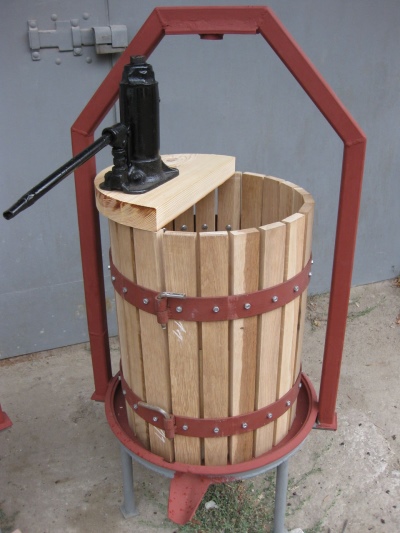
- The helical design is also powered by manually rotating the handlewhich is part of the crushing weight.In this case, you will also have to exert quite a lot of effort to obtain juice, especially if the loading bowl is completely filled.
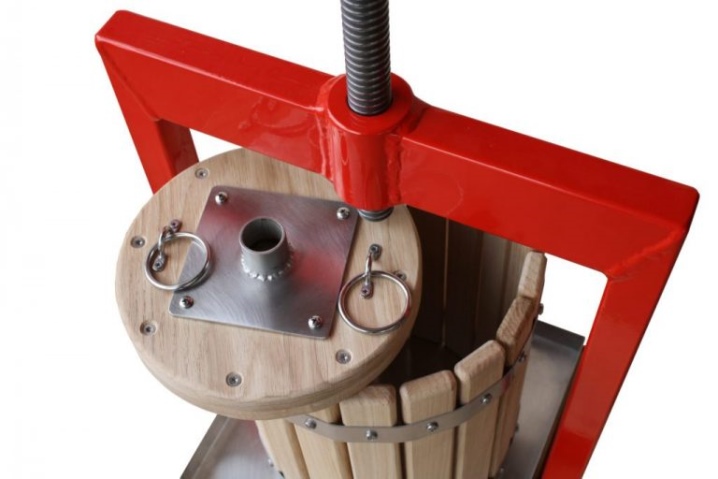
- The principle of operation of the screw structure is somewhat similar to the operation of a meat grinder. With the help of a screw element, the raw material flows to the sieve, and under the influence of mechanical pressure, the berries turn into juice.
Such devices are suitable for processing berries at home, and for professional purposes, more powerful units will be needed.
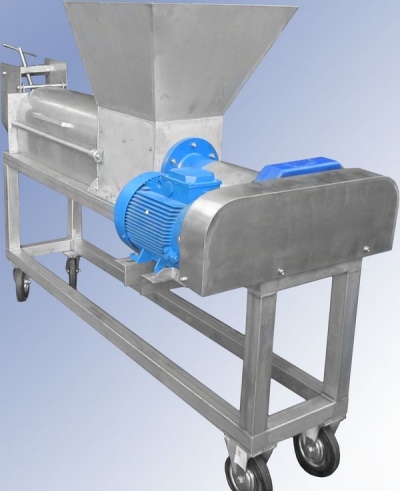
Which one is better to choose?
The choice of a grape press largely depends on your goals and the volume of the harvest. For example, for home use, a very small hand-operated device is suitable, which is unlikely to be suitable for processing raw materials in large quantities.
For an industrial scale, it is best to get a professional unit powered by the mains, since only a powerful and fast device is able to process the entire crop in the shortest possible time.
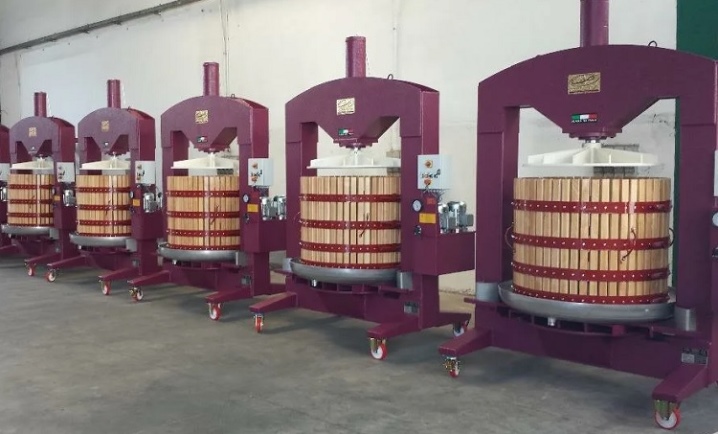
How to use?
Before you start processing grapes, you need to decide on the ultimate goals - you want to get juice or wine material at the exit. In the first case, you need to load whole berries into the device, and in the second - the pulp (a mixture of ground berries with juice, seeds and peel).
To do everything right, you need to follow a simple sequence of actions:
- after you have completely assembled the structure, you need to cover the inside of the container with a sterile clean cloth that will filter the resulting juice;
- then you need to load the container with raw materials and cover with the edges of the fabric;
- then it remains only to activate the press mechanism, depending on its type;
- when the spin is complete, all you have to do is empty the contents of the press.
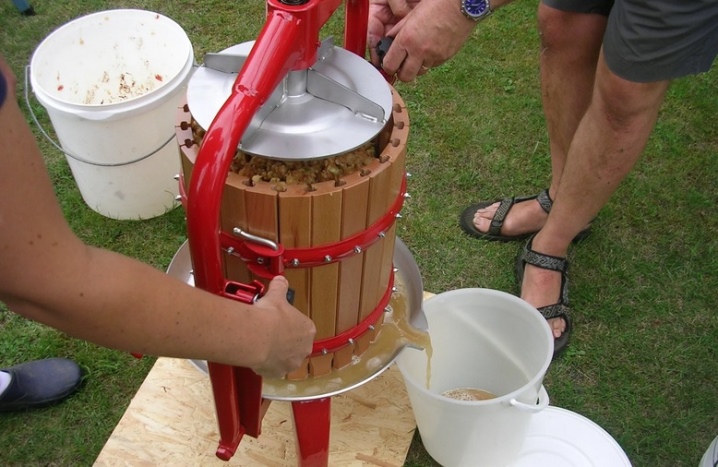
How to do it yourself?
To make a press yourself, you will need the following materials and tools:
- running nut and screw for the mechanism;
- metal corners and profiles;
- tools for wood and metal processing;
- circle, as well as a dense stainless steel plate;
- wood beams from suitable tree species, some of which need to be rounded;
- parts, as well as metal for fastening.
Before starting the process of creating a press for grapes, you should take into account the peculiarities of the materials with which you will have to work, and also evaluate your strengths - if you have never done anything with your own hands, it is better to refrain or ask for help from more experienced people.

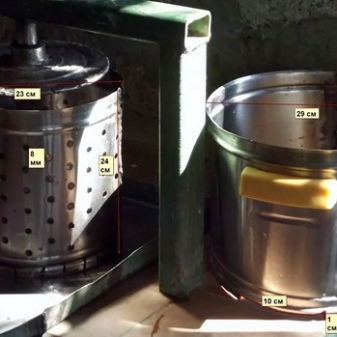
If you have the necessary experience and knowledge, then you can get to work, observing a certain sequence of actions.
- First, a screw pair is made. You can do it yourself or consult a professional turner.
- A wooden part must be made from the rounded parts of the beams and a metal plate, which will serve as the pressing part of the entire mechanism.
- The next step is to build a grape container. To do this, it is necessary to connect the bars, forming a cylindrical shape. To fasten the beams together in the upper and lower parts, it is best to use self-tapping screws and a metal tape. It is necessary that the diameter of the container be slightly larger than the pressing piston, otherwise the device simply will not work.
- After the main cylindrical frame is ready, you can be puzzled with the manufacture of the lower part of the container. To do this, you need a metal circle, the diameter of which is slightly larger than the cylinder itself, with curved edges. Juice will flow into this pan, so for convenience you can make a drain hole with a tap.
- When the container is completely assembled, you can start making the frame - the U-shaped part of the device, on which the entire mechanism will be fixed. The frame is made of pre-prepared metal profiles and corner elements, and for easy storage, you can make the structure collapsible.
- In the place where the screw element will be located, it is necessary to fix it on the profiles by welding a running nut to them. It is also necessary to secure a round stainless steel plate to the bottom of the system to act as a pallet support.
- After all the details of the structure are ready, they must be processed from dirt and debris, after which you can assemble the press and start working.
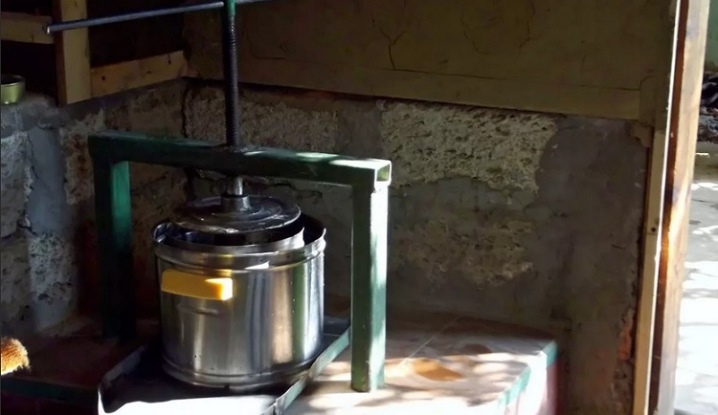
For information on how to make a grape press with your own hands, see the next video.













The comment was sent successfully.